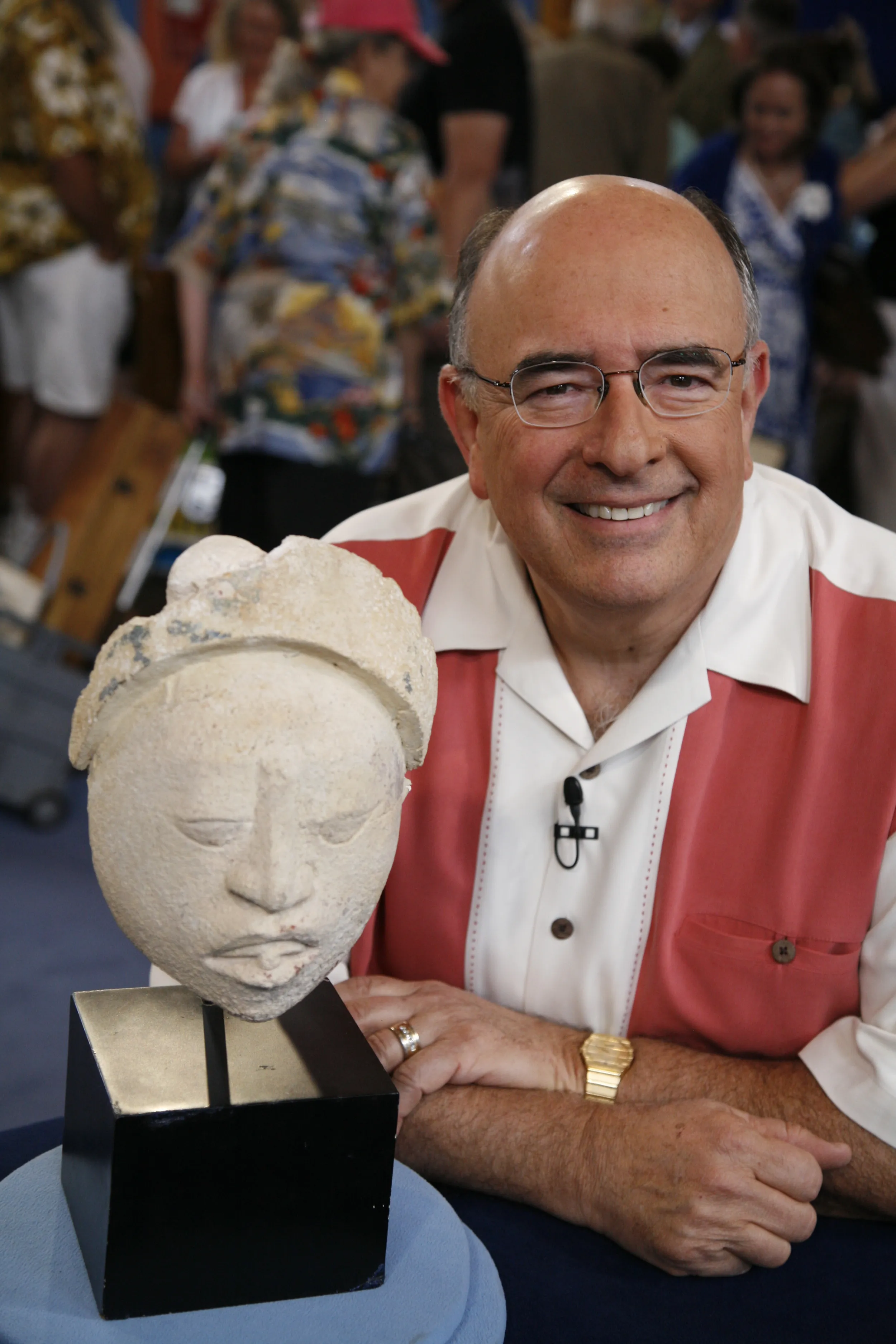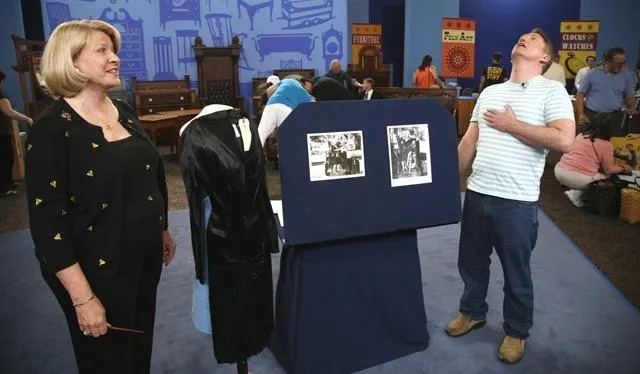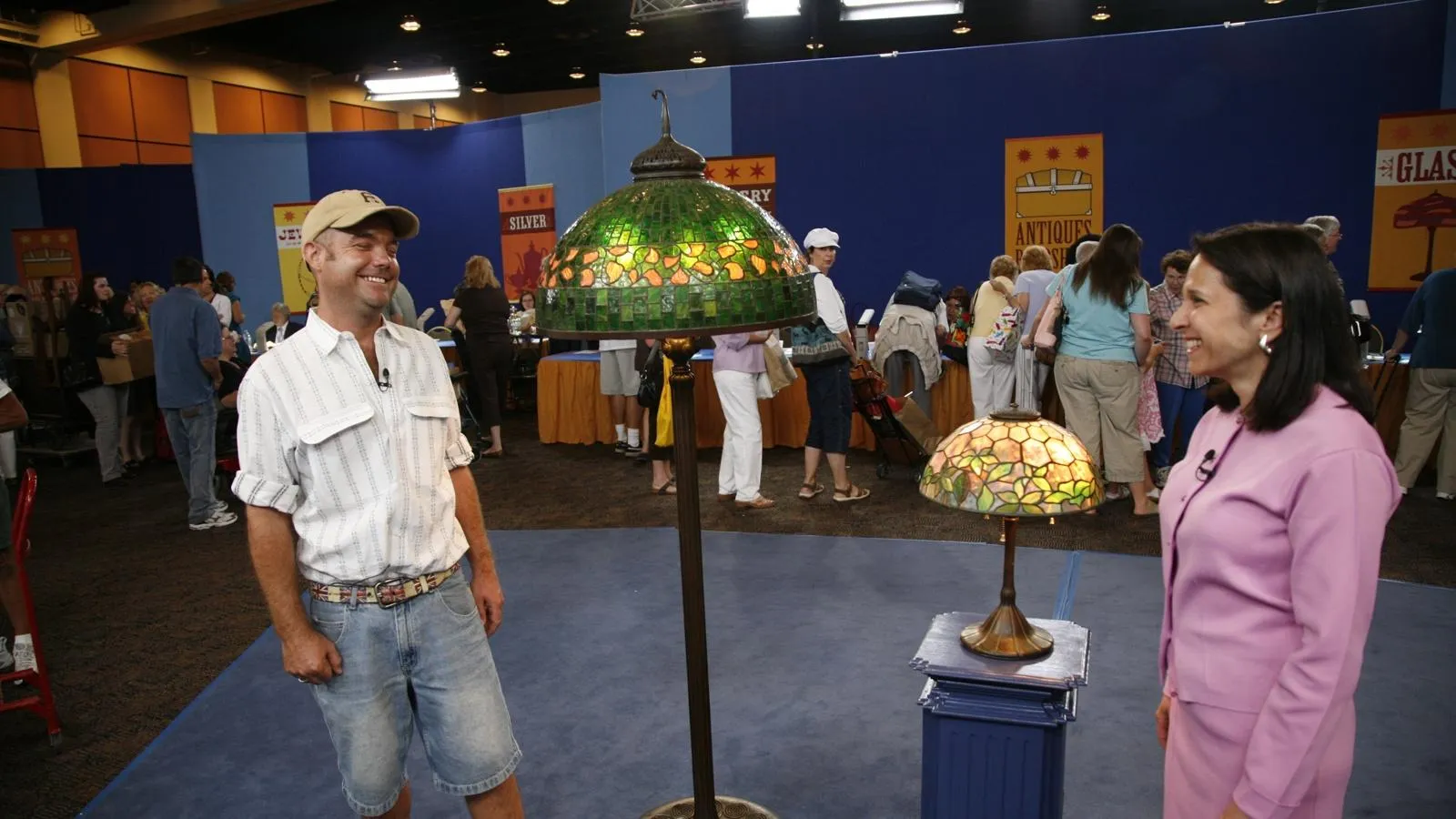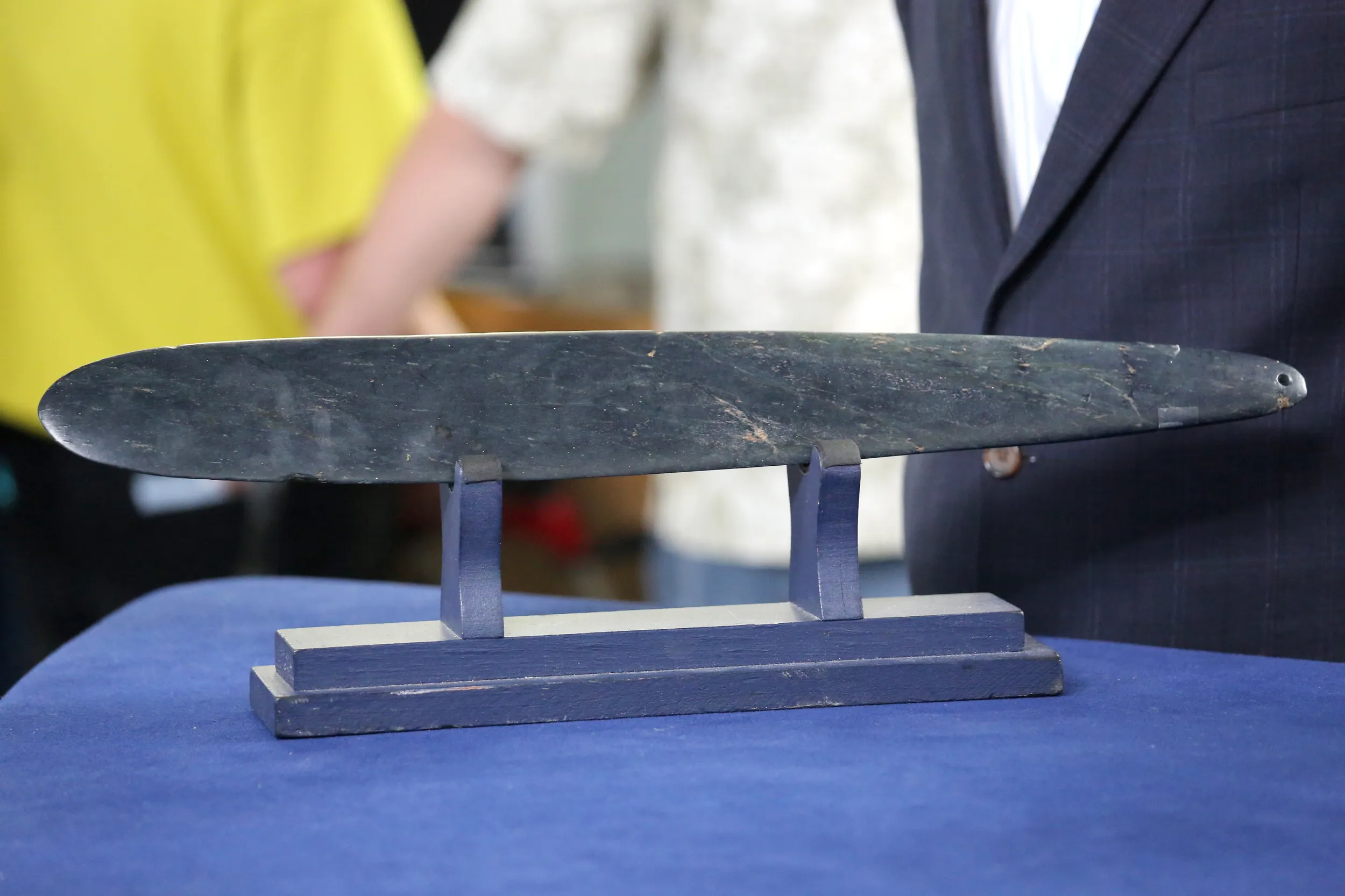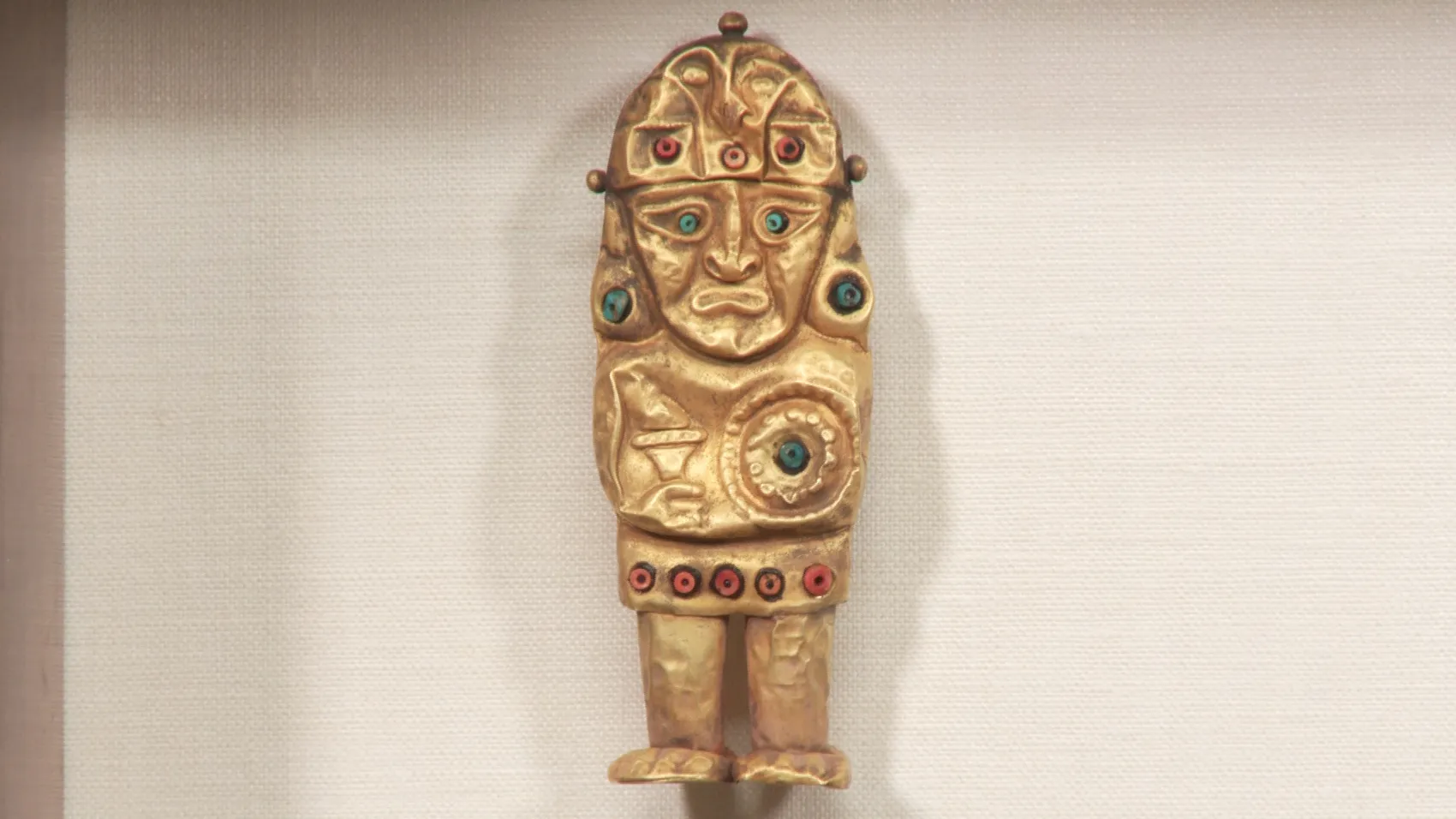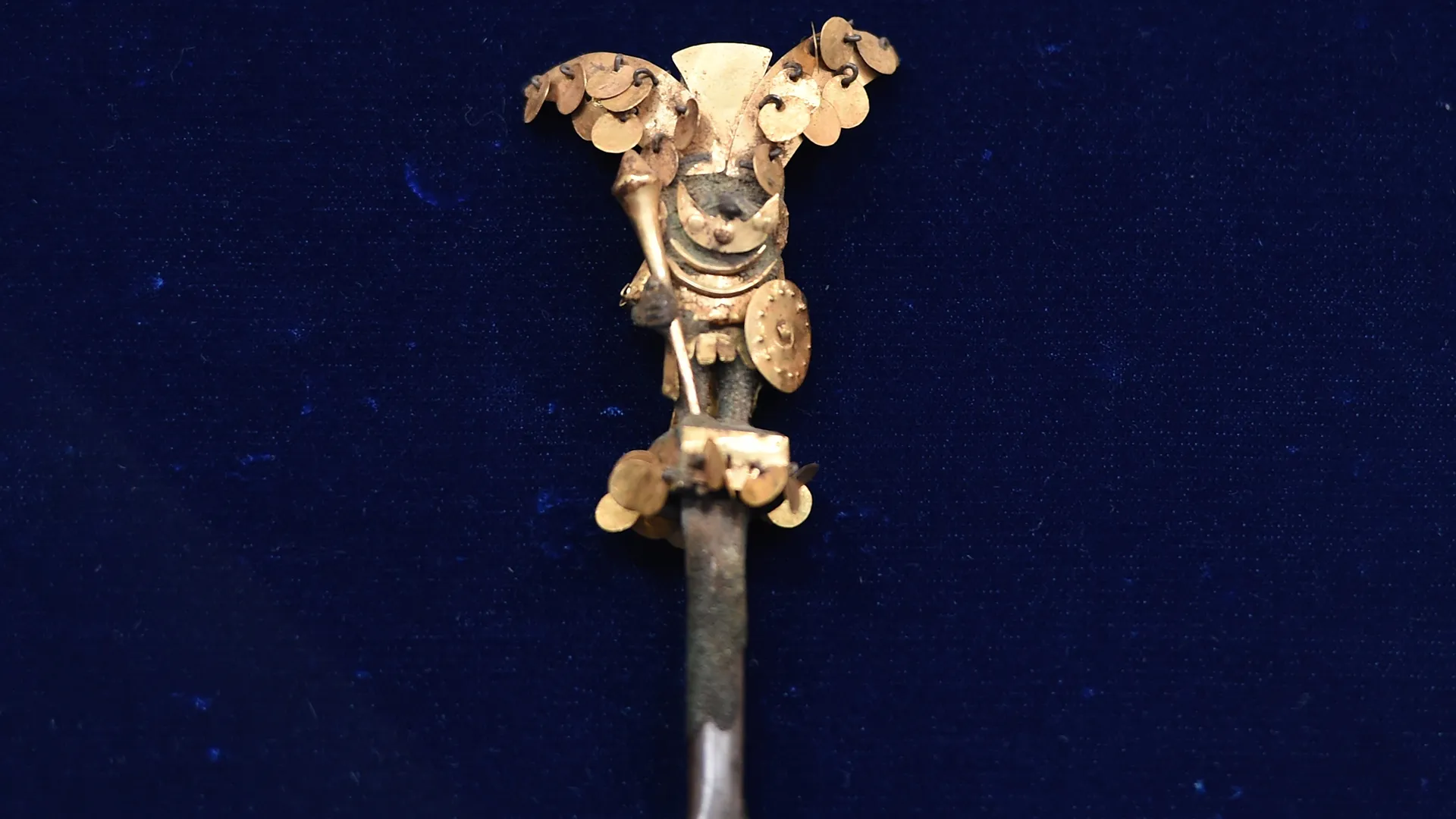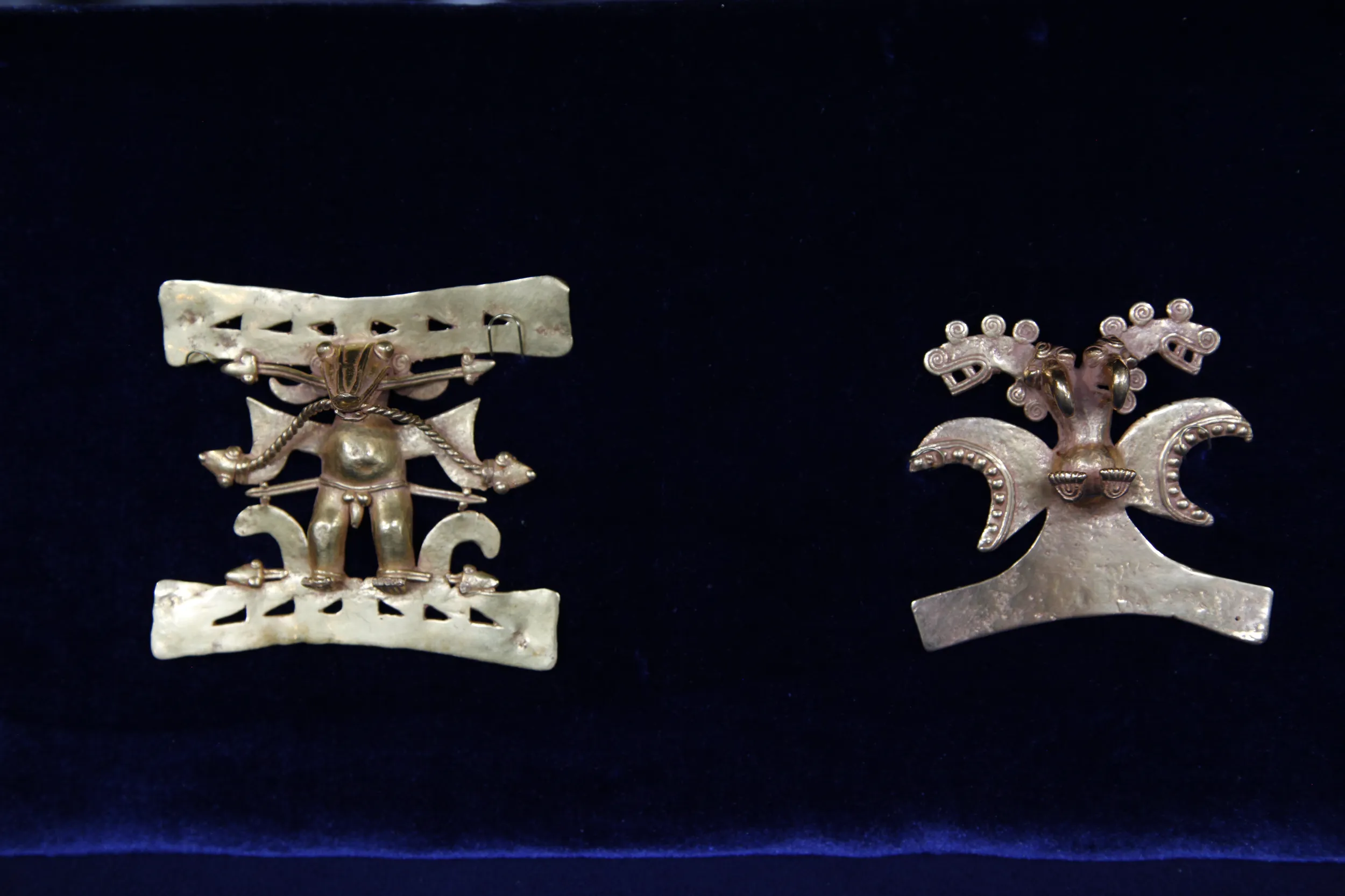GUEST: My, uh, grandfather was in the, uh, antiques and art business, and he was himself a third-generation dealer, uh, in Austria, and when the Nazis came through Austria, uh, they confiscated everything he owned and he escaped with this piece and a few other pieces. And then he gave it to my dad, who in turn gave it to me.
APPRAISER: Okay, and when did it actually come into the United States?
GUEST: I believe 1940, maybe '41. Well, I'd like to know, uh, first of all, if it's legal for me to own it, and, uh, secondly, what, uh, what it's worth.
APPRAISER: Okay, well, I'm gonna put you out of your misery with respect to legality. This piece, having come in in 1941, is fine. The UNESCO Convention, which most institutions now abide with, is 1972. But as far as you or an institution owning this piece, it's fine.
GUEST: Wonderful, thank you.
APPRAISER: All right, now let's first explain what this is-- this is a stucco head. It's Mayan, from 600 to 900 A.D., probably from one of the sites in Mexico. Stucco is a covering that has been put over this thing and modeled. This was a portrait of a dignitary, and it was actually removed from the façade of a building. So we can see here where it was chipped off. And this came into Europe probably sometime 1920s-1930s. One of the things that we always are concerned about is condition. Now, this would have undoubtedly been more colorful, and as you can see, there's still traces of polychrome up here, up in this area. You can even see some of the red here. For having survived as long as it did, it's really in pretty darn good shape. I don't see any restoration around the mouth. And understand, this is stucco, so it's extremely fragile. And this is something that we normally see broken and then restored.
GUEST: I see.
APPRAISER: So we have two elements now that are really great: it, it's been here a long time, it's in great condition. Now, the other thing that we look at is the balance of this piece. This has a wonderful sensitive approach in the balance in the eyes, in the mouth, in the nose. It's a little bit smaller, but it's highly desirable because it has all of these elements. It's aesthetically great, it came out early, it's in terrific shape. I think this is a $20,000 to $30,000 object.
GUEST: Wow.
APPRAISER: Now, the reason why I say that is because a lot of pre-Columbian can't be acquired by institutions because it's illegal. This one has solid documentation, and so I'm going to push the price a little bit. It's in great shape, it's an excellent example, then that's a price that I would expect a dealer to ask in a good gallery in L.A. or New York. Now, because that would be an asking price, that would be an insurance value for you.
APPRAISER: The ceramic body is what we would call majolica, and it is Wedgwood. What we like about this set, these wonderful silver plate mounts with a Neoclassic-type decoration. And on one handle, there is an, uh, English registry mark-- this piece was registered in 1877. These days, this would sell probably between $800 and $1,200.
GUEST: My goodness, thank you!

